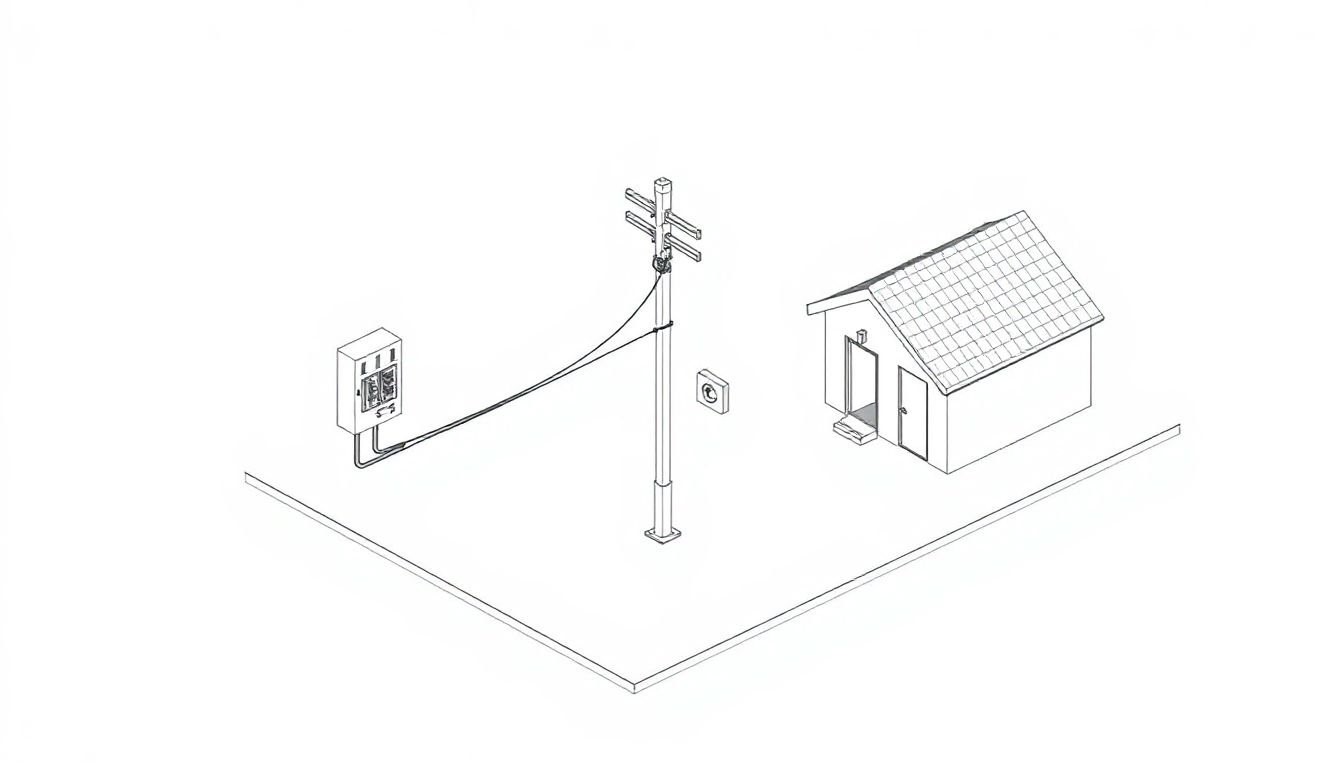Symbolism in One Line Diagram Electrical
Understanding Schematic Representation
Old electrical drawings can look like a spider web. Full schematics show every wire and switch in detail. But a one line diagram electrical skips that clutter. It uses one line for each circuit path. This makes it easier to spot issues or plan changes. Engineers focus on the big picture: power sources, loads, and protections. You get the essentials without drowning in lines.
Key symbols keep things standard. A zigzag line stands for a resistor. Circles often mark fuses. These come from rules like IEC or ANSI standards. Follow them, and your diagram works anywhere in the world.
Transformers, Circuit Breakers, and Bus bars
Transformers change voltage levels. In a one line diagram electrical, you see them as two coils side by side. One side high voltage, the other low. This symbol tells you where power steps up or down.
Circuit breakers protect against overloads. They look like a switch with a break. Ratings like 100 amps go next to it. Bus bars connect multiple lines. Picture thick bars linking equipment. Their symbol is a straight line with branches.
These icons make the electrical system representation clear. No guesswork needed.
Data Annotation:
Every symbol needs labels. Voltage shows as numbers, like 480V. Impedance values help calculate losses. Short-circuit ratings, in kVA or MVA, warn of fault strengths.
Protective settings appear too. For relays, you note trip times. This data turns the sketch into a tool for real work.
Voltage Classifications and System Grounding Depictions
Power lines run at different levels. A one line diagram electrical marks them: 13.8kV for main feeds, 120V for outlets. Colors or notes separate them.
Grounding keeps things safe. Solid ground symbols show direct earth ties. Resistance ground uses a resistor icon. This setup prevents shocks during faults. Clear marks help spot weak points.
One Line Diagram electrical is Indispensable for Electrical Design and Safety
Essential Role in System Design and Sizing
Design starts with the basics. You map out loads first. Lights, motors, all add up. The one line diagram electrical guides conductor picks. Too thin a wire? It overheats.
It also sizes breakers and panels. Match them to peak use. This avoids waste and boosts efficiency.
Tip: Always check the latest version of your diagram before any install. Old ones lead to wrong parts and costly fixes.
Fault Analysis and Protection Coordination
When a short happens, things go wrong fast. The single line diagram meaning shines here. It maps paths for fault currents. Engineers use it to set relay times.
Overcurrent protection trips breakers in sequence. Ground faults get the same treatment. Coordinate them right, and only the bad spot shuts down.
In a big data center, one fault could wipe out servers. A solid one line diagram helped spot a weak link. Quick relay tweaks stopped a full blackout. Lives and data stayed safe.
Maintenance, Troubleshooting, and Compliance
Daily checks rely on this diagram. Techs follow it for lockout steps. Tag a breaker? The map shows the path.
Trouble hits? Trace the flow backward. Find the issue without tearing walls apart.
Meeting Regulatory and Insurance Requirements
Rules demand up-to-date diagrams. NFPA codes say keep them handy. Insurers check too. Miss this, and claims get denied.
Post a copy in the panel room. Update after every change. It saves headaches down the line.
Advanced Applications
Integrating with Power System Analysis Software
Digital diagrams feed into programs like ETAP. Run load flows. See voltage drops.
Simulate faults. Predict behaviors before they hit.
Harmonics from drives? Model them here. Fix issues early.
Utilizing Data for Arc Flash Hazard Calculations
Arc flashes burn hot. Use diagram data for calcs. Impedances give fault currents.
Incident energy numbers follow. Pick PPE levels: gloves, suits.
In plants, this cuts injury risk. One study showed 30% fewer incidents with good diagrams.
One Line Diagram electrical in Renewable Energy Integration
Solar panels add twists. Inverters feed power back. The diagram shows ties.
Battery storage smooths peaks. Mark BESS symbols clear.
Micro grids switch modes. DER integration needs new lines.
For a solar farm, the renewable energy one line diagram maps grid sync. It handles flow both ways. Micro grid schematics add islanding options. This setup boosts green power without blackouts.
Conclusion:
The one line diagram electrical is more than paper. It’s your shield against chaos. It guides design, spots faults, and eases fixes.
Keep it current through the building’s life. Field checks and updates make it gold.
Invest in good ones now. You’ll save time, money, and maybe lives. Ready to draw yours? Grab software and start mapping today. Your system will thank you.





